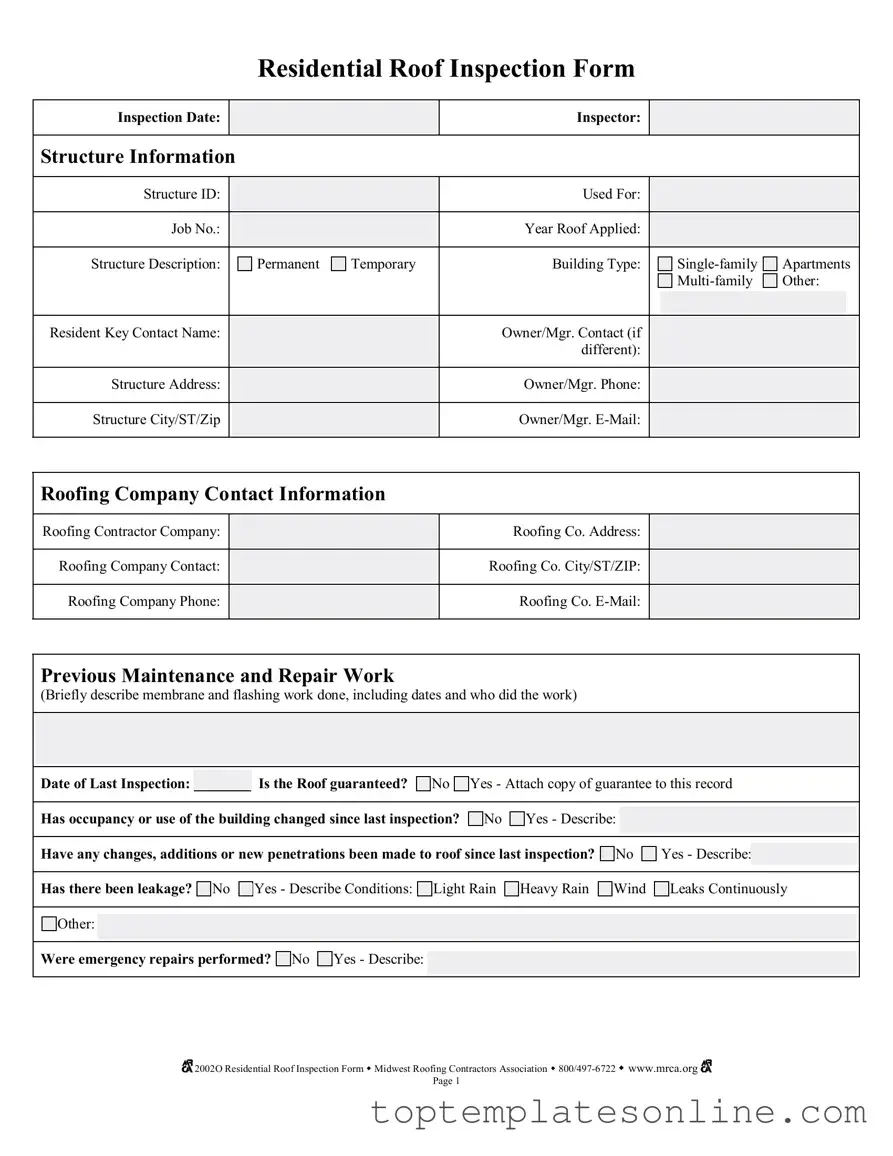The Roof Inspection Form is a crucial tool for assessing the condition of residential roofs. It serves as a comprehensive checklist that guides inspectors through various aspects of roof evaluation, ensuring that all important details are documented. Key sections of the form include basic information about the structure, such as the inspection date, inspector name, and structure details like its type and address. Additionally, the form collects contact information for both the property owner or manager and the roofing company responsible for maintenance. Past maintenance and repair work is also noted, which helps to understand the roof's history and any previous issues that may have been addressed. The form prompts inspectors to note the date of the last inspection and whether any changes have occurred since then, including alterations to the building's use or roof structure. It also inquires about any leaks, emergency repairs, and the overall condition of various roof components, such as the roof deck, walls, and drainage systems. Inspectors must categorize the condition of each component as good, fair, or poor, and provide detailed descriptions of any problems identified. The inclusion of a photographic record section further enhances the documentation process, allowing for visual evidence to accompany written observations. Overall, the Roof Inspection Form is an essential resource for maintaining the integrity and safety of residential roofs.
